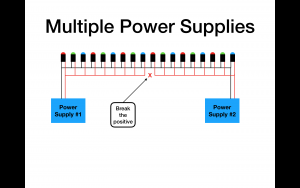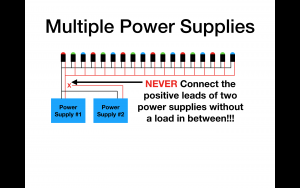This is how I built my P10 Panel Enclosure for my DIY North Pole sign.
The enclosure started out with a 1″ x 6″ x 8′ White PVC Trimplank from Home Depot. I used a 10″ x 84-Tooth Laminate/Non-Ferrous Metal Cutting Saw Blade to make the cuts. They are expensive, but I already had one for cutting acrylic sheets and it cuts through it like butter. The miter cuts were tricky to line up and I probably could have done a better job with that. The blade cuts a 1/8″ slot which I used to hold the clear acrylic securely.
I drilled 1/8″ holes in the bottom plate every 4″ on both sides to let moisture drain if needed. Eyelets through the top are sealed with silicone to prevent moisture from coming through the top.
The electronics (power supply, BeagleBone Black & a SanDevices E6804 pixel controller sit on a tray I made from 1/4″ PVC facia board (don’t have a link for that). It makes mounting the electronics easier and raises them up a little in case moisture gets inside the enclosure.


